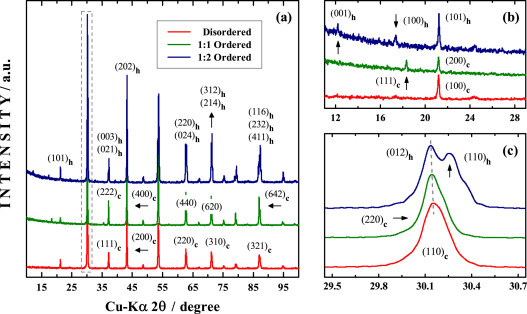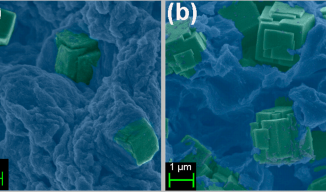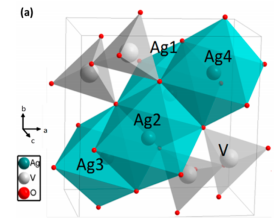
Ordering effect on the electrical properties of stoichiometric Ba3CaNb2O9-based perovskite ceramics
Abstract: Cation ordering is the most common phenomenon detected in A3B′B″2O9-based complex perovskites. Some important physical features of this system are due to the B-site ordering at long and short range. For microwave applications as filters and resonators, the 1:2 order is more appropriate. Otherwise, the oxygen vacancies and 1:1 order are considered the main factors behind the excellent performance of nonstoichiometric A3B′1+xB″2-xO9-δ-based ceramics as proton conductors. Until now, however, there are no available reports regarding the isolated effects of B-site ordering at long range on the electrical properties of stoichiometric systems. This work reports the preparation of 1:1 and 1:2 ordered Ba3CaNb2O9 ceramics. Here, we combine the Raman scattering and group-theory calculations to distinguish the fingerprints of the 1:1 and 1:2 orders. The electrical properties of the ordered Ba3CaNb2O9 are analyzed in terms of a phenomenological model based on the parallel combination of a resistor, constant phase element, and capacitor. In particular, the conductivity relaxation ascribed to the grains is due to the oxygen vacancies. Besides, we found that the 1:1 order increases the dc conductivity compared to the 1:2 order.
Author(s): Rodrigues, J. E.; Bezerra, D. M.; Hernandes, A. C.
Ceramics International
Volume: 43 Issue: 16 Pages: 14015-14022 Published: 2017
DOI: https://doi.org/10.1016/j.ceramint.2017.07.133
PDF: Ordering effect on the electrical properties of stoichiometric Ba3CaNb2O9-based perovskite ceramics




